|
|
|
THE HOLY SHROUD between Light & Shade
-Part 1°-
Millions of people worldwise are interested in the Shroud and miraculous image of Jesus Christus. I started my computer to search what'sa the bible hidden about this event ?
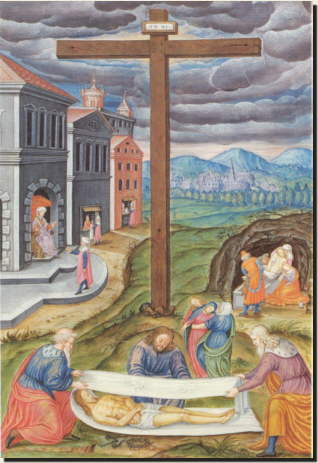 |
|
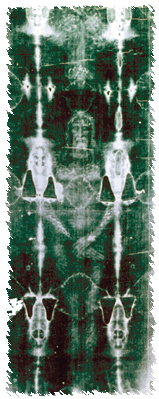 |
According to tradition the Holy Shroud is the burial shroud in which Jesus was wrapped after he was taken down from the cross. This corresponds to the accounts written in the Gospels, which describe how Joseph of Arimathea arranged the body of Jesus in the tomb after wrapping it in a "shroud". This tradition matches the historical vicissitudes of the Holy Shroud, although the documentation of the Turin Shroud can only be considered absolutely certain and complete from the mid fourteenth century onwards. However, the concordant results of historical, scientific, iconographic and archaeological research have made it possible to reconstruct the movements of the burial wrapping of Christ during the previous period with a fair degree of certainty. The Holy Shroud has always aroused great interest, but the first photograph of it gave an entirely new direction to all studies on the subject, and to the cult of the Shroud itself. During the exposition of 1898 a Turin lawyer, Secondo Pia, was authorized to photograph the Shroud. Pia himself told of how he nearly dropped the large glass negative plate (customary for the photography of the time) when on the photographic negative he saw the positive figure of a man emerging, for the first time visible in natural contrast, with lifelike highlights and shadows as on a real photograph. The man's body was well-proportioned and well-built, with a majestic countenance. The imprint on the Shroud therefore behaves like a naturally negative image, with the exception of the bloodstains and the marks of the wounds, as will be explained below. |
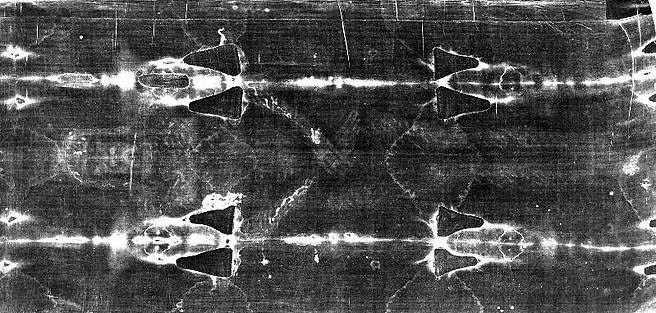
In 1931 an Italian professional photographer, Giuseppe Enrie, took a new and more definitive set of photographs which confirmed the extraordinary nature of the imprint on the Shroud. These photographs gave new impetus to the early scientific studies which were to develop later on to include all branches of science and research.
The Shroud is 4.36 metres long and 1.10 metres wide (approximately 14.3 feet by 3.6 feet). The fabric is linen, spun with a Z twist, and woven in a three to one (herringbone) twill. It was woven on a primitive loom and the technique is often irregular.
The traces imprinted on the Shroud are of four basic types:
Fire marks on thefabric. There are little singed holes in the cloth, with two dark parallel lines of scorches running along its entire length. These are intersected by twentynine roughly triangular patches of quite a different fabric which were sewn on later by the Poor Clare nuns of Chambéry. The patches cover the holes made by a drop of molten silver from the Shroud's casket during the fire that broke out in 1532 in the sacresty of the Sainte-Chapelle at Chambéry, where the Shroud was kept at that time. The Shroud was preserved in the casket, folded into forty-eight layers .
Waterstains. Lozenge-shaped stains left by the water used to put out the fire of 1532.
The chiaroscuro image of a human figure. In the central part of the Shroud, between the fire marks, appear the impressions of the back and front of a full-size human figure. Although the image is not lit from any angle (a necessary expedient in painting and photography in order to give depth to the figure through the contrast of light and shade) it appears all the same to be in relief through the effect of different shades of light brown. The parts of the figure that would have been in closest contact with the cloth, such as the forehead, nose, chin and chest are deeper in colour. Other parts are less intense, fading away completely where the body would have been furthest from contact with the fabric. The stature of the person who left this impression would have been of about 180 centimetres (5 feet and 11 inches).
Bloodstains. In particular places, such as the forehead, the nape of the neck, wrist, feet and right chest, the shape and colour of the stains are different from those of the rest of the body. They are reddish in colour and flat (in other words without relief) and the outlines of the stains are clearcut: they do not fade away at the edges. It seems that a substance has been transferred onto the cloth, leaving a part of itself on the fabric.
The studies and scientific research that have been carried out on the Shroud for nearly a century have led to the following findings which are considered incontrovertible:
— The Shroud is not a painting. This is a fact that has been scientifically verified and it has been accepted by all experts.
— It cannot be the work of human hand, as the image on the Shroud appears as a photographic negative to the unaided eye. It would have been impossible for any artist to reproduce a human figure in perfect photographic negative many centuries before the discovery of photography (in the first half of the 19th century) and the concept of negative images.
— Although the imprint of the human figure on the Shroud appears as a photographic negative, the bloodstains and the wounds are impressed on the Shroud as they would appear in reality, as the blood itself has coloured the Shroud through direct contact. In a photograph, the photographic negative of the Shroud is revealed as a positive image, with what appear to be bloodstains showing up in white.
— The image must have been imprinted by a corpse that left no traces of decomposition. The body therefore remained wrapped in the Shroud long enough for the image to form, but not so long as to register any decomposition of the corpse (which would have a deleterious effect on the image). Moreover the body was separated from the cloth without deforming (inexplicably) the clots of blood.
— The hands were not pierced through the palms but through the wrists. Throughout art history the thousands of artists' representations of the crucifixion almost unfailingly show the nails driven through the palms, and a forger would have certainly done likewise. Anatomists point out, however, that the flesh of the palms could not possibly have supported the weight of a body on a cross. To suspend the weight of a human body the only suitable location would be to drive the nails through the bones of the wrists.
Only four fingers of each hand are visible on the Shroud. A forger would not have dared to portray the hands of Christ like this. Nor would he have known that the thumb automatically bends brusquely down when the wrist is pierced.
The blood and serum that flowed out of the chest wound came from an injury produced after the death of the Man of the Shroud. Jesus, as we read in St. John's gospel (19, 33-34), was already dead when he was struck by the lance .
Tests carried out on bloodstained threads from the Shroud have shown that there are traces of blood on the cloth. Studies by pathologist Prof. Pierluigi Baima Bollone show moreover that this blood is human and of the AB blood group.
|
|
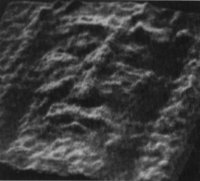 |
Three-dimensional image of the injured face of the Man Shroud (processed by G. Tamburelli e N. Balossino)
There is the imprint of a coin on the right eye of the figure. This was discovered by Prof. Francis Filas, and was later confirmed by other researchers (Tamburelli, Whanger, Moroni). The coin imprint appears to bear the letters "YCAI" arranged in a curve surrounding a shape like a shepherd's crook. This description fits the Pontius Pilate lepton, or mite, of the first years of the Christian period.
The late Swiss criminologist and pollens expert Dr. Max Frei identified fifty-eight varieties of pollens on the Shroud before his death. The plants these pollens came from are typical of, and at times exclusive to, the regions through which the Shroud is historically supposed to have passed (Palestine, Turkey, France, Italy) .
CHRONOLOGY OF THE HOLY SHROUD
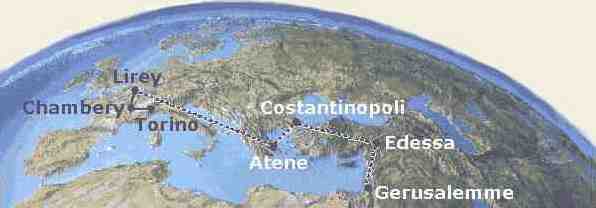
Historical information before the thirteenth century, even though it is not copious, confirms the tradition of the conservation of Christ's burial robes. Although it is not possible to connect this documented information unequivocally with the Turin Shroud, these historical references do nevertheless integrate with the findings of the scientific research carried out on the Shroud.
544 - An extraordinary cloth image "not made by hand" was preserved at Edessa, which is now Urfa, in Turkey. Many experts identify this " I mage of Edessa" with the Shroud, folded in such a way that only the facial area was visible and accessible.
944 - The cloth "Image of Edessa" was transferred to Constantinople where it must have been spread out and the whole body could be seen.
1147 - Louis VII, king of Erance, visited Constantinople and venerated the Shroud that was held there.
1204 - Many relics were dispersed during the occupation of Constantinople during the Fourth Crusade. Testimonies written by Crusaders declare that they have seen "the Shroud of Our Lord".
1353 - The Shroud emerged in the possession of Count Geoffrey de Charny, at Lirey (France). From this moment onwards the Shroud's presence in the West has been carefully documented.
1453 - Margaret de Charny ceded the Shroud to Duke Louis of Savoy, who kept it in Chambéry. A rich chapel was built there to house it.
1506 - Pope Julius II gave the Shroud a special feast day as the Holy Shroud, approving the liturgy for the Mass and the divine office.
1532 - (4 December) A fire broke out in the sacresty of the Sainte-Chapelle at Chambéry, where the Shroud was kept. The Shroud's silver casket began to melt because of the high temperature, and a drop of molten silver from the lid fell on one edge of the folded Shroud, burning through several layers of the fabric.
1534 - (15April-2 May)The Poor Clarenuns of Chambéry repaired the scorched parts of the Shroud, applying those triangular patches that may still be seen today.
1578 - Emanuele Filiberto transferred the Shroud to Turin to shorten S. Carlo Borromeo's long and tiring journey to fulfill his vow. Borromeo had vowed to venerate the Holy Shroud in gratitude for the deliverance of Milan from the plague.
1694 - (1 June) The Shroud was placed in the sumptuous chapel designed by Abbot Guarino Guarini.
1898 - (25 - 28 May) The Shroud was photographed for the first time on the occasion of a public exposition by Secondo Pia, a Turin lawyer. Studies and research began in all branches of science.
1931 - The Shroud was photographed again on the occasion of a public exposition, this time by a professlonal photographer, Giuseppe Enrie.
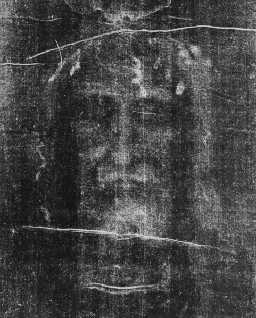 |
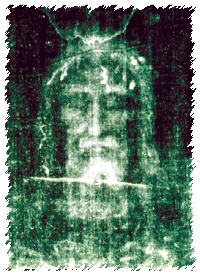 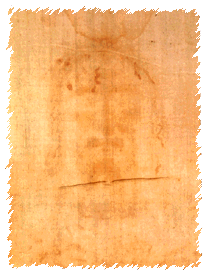 |
1933 - A public xposition was held to commemorate the XIX centenary of the Redemption.
1939 - The Shroud was taken to the Abbey of Montevergine, in the province of Avellino, to protect it from being damaged during the war.
1946 - The Shroud was brought back to the Guarini Chapel, Turin.
1969 - (16 - 18 June) Cardinal Michele Pellegrino appointed a Commission of experts to examine the Shroud. During this private showing the Shroud was photographed again (also in colour), this time by Giovanni Battista Judica Cordiglia.
1973 - (23 November) The first television exposition took place .
1978 - (26 August - 8 October) There was a public exposition to commemorate the IV centenary of the transfer of the Shroud from Chambéry to Turin. At the end of the exposition forty-four researchers from several countries were authorized to carry out tests directly on the Shroud for an overall period of one hundred and twenty hours.
1983 - When Umberto of Savoy died on 18 March the ownership of the Shroud passed into the hands of the Holy See in accordance with the will of the deceased.
1988 - Samples of the Shroud were taken for the carbon-14 test. In contrast with all the previous tests, the Shroud fabric was dated as originating between the XIII and the XIV centuries. The means used in taking the sample, the method of dating and the results supplied by the three institutes that carried out the tests have been considered unsatisfactory by a significant number of experts, who have moreover rejected the conclusions presented by the three laboratories. Subsequently various groups of researchers have proposed studies and experiments to assess the reliability of the method of carbon dating on fabrics that have been through such vicissitudes as the Shroud.
1992 - (7 September) The Shroud was shown to a small panel of international experts for advice about how best to conserve the fabric and the image .
1993 - (24 February) The Shroud was temporarily transferred behind the High Altar of the Cathedral of Turin so that restoration work could be carried out on the Guarini Chapel .
1995 - (5 September) Cardinal Giovanni Saldarini, Archbishop of Turin and Papal Custodian of the Holy Shroud, officially announced the forthcoming public expositions of the Shroud. The two expositions will take place in 1998 and in the year 2000 during the Easter Period.
1998 - (5 - 7 giugno). ITI Congresso Internazionale di Studi sulla Sindone: "Sindone e Scienza: Bilanci e programmi alle soglie del terzo millennio".
The
Shroud began to "surprise" a century ago when it was photographed for
the first time by Secondo Pia, in 1898.
The negative of that photograph revealed in detail, and with even greater
clarity than the positive image, all the "wounds" that the Shroud
preserved.
How was the image on the Shroud formed?
the image
Science has not yet come up with any plausible explanations. Below is a list of
definitive results from research carried out this century:
is not a painting, and it was left by the corpse of a man who
was beaten and crucified. Computer processing has shown that the image has
three-dimensional properties, something which neither paintings nor standard
photographs possess.
Pollens have been found on the cloth, strongly supporting the view that
the Shroud spent time not only in Europe but also in the Near East.
Tests on traces of blood from the Shroud have revealed the presence of
human blood from blood group AB.
In 1988, carbon-14 dating was carried out on a fragment of the Shroud.
The results date the fabric to between 1260 and 1390 A.D.
The scientific community itself now questions these results, and more recent
experimental studies have reopened the debate.
Modern science is still investigating how the image was formed, its date, and how best to preserve
Bible Code Matrix
Code Matrix Location:
The Matrix starts at Genesis ch.44 ver.28 and ends at Genesis ch.29 ver.77
The Central Term is " SHROUD ", and it appeared with a skip sequence ELS of -1412

key words set & phrases
encoded in close proximity of the central term-SHROUD:Shroud,Jesus,Messiah,Crucifixion, Crucifixed, Testile,Linen, Image,Figure,Figured, Photo,Face,Body,True,Edessa, Lirey,Chambèry,Turin,Weep
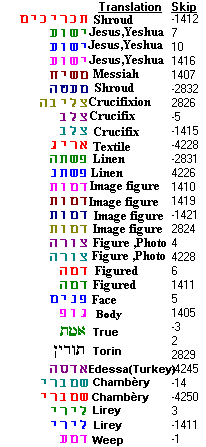 |

''Have thou this glory over me |
Matrix
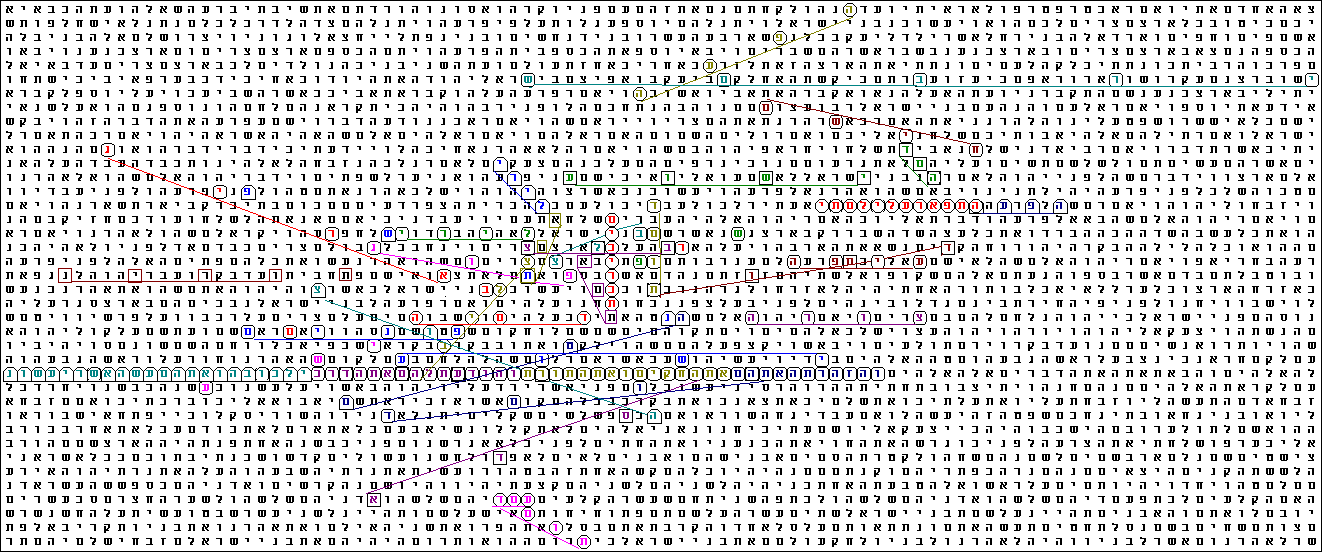 |
The same Matrix above
|
|